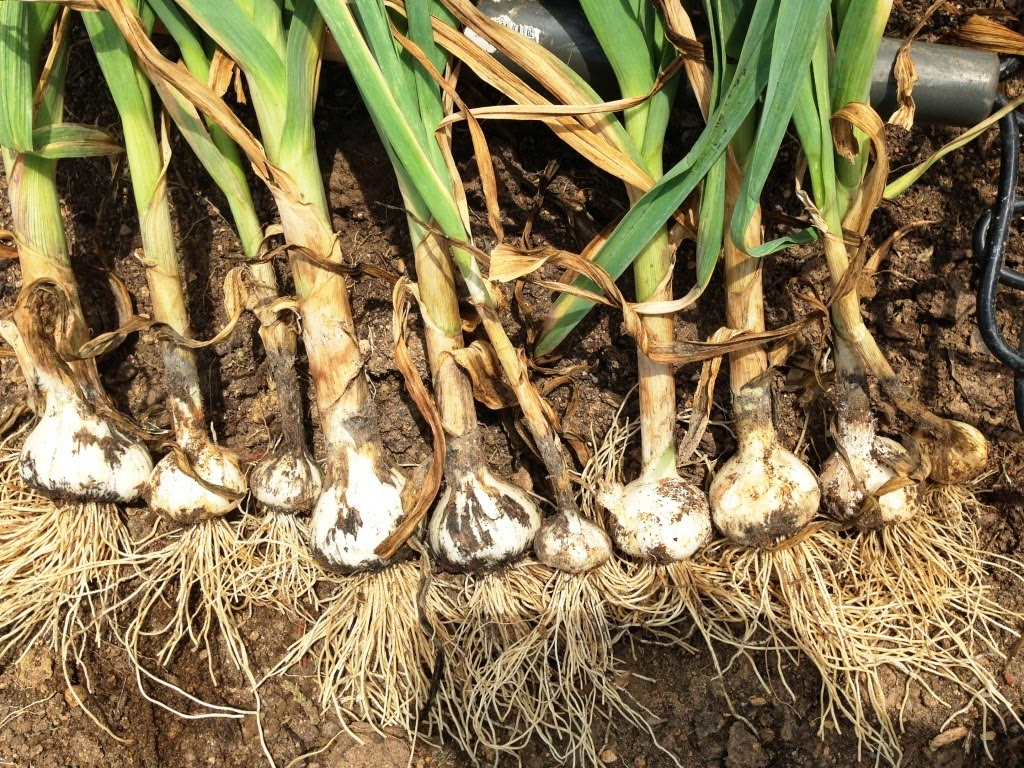Q. Does a colder, harsher longer than usual winter affect
the growing of garlic? I’ve noticed many of my plants are under-developed, or
didn’t develop at all, while others have gigantic stalks!
The underdeveloped ones could have been bad
seed from last year’s harvest. And other
plants look like they are ready to harvest!
I have yet to dig down to inspect the bulb, and they are the first and
earliest of my garlic to harvest.
reduction in growth or performance from a garlic clove unless the clove was
damaged in some way. The only way to check that is to dig out some poor
performing plants and look for a potential problem.
clove too small to begin with? Was there a disease problem on the clove or
plant that would cause the plant to perform poorly? Was there an insect problem
causing damage to the clove or plant?
of the clove is related to plant size and how big your garlic bulb will grow.
So if you are seeing differences in growth it would most likely be either a
disease, insect or production problem. Bulb mites, onion maggot, nematodes, and
some diseases. This can be true particularly if you save seed from year to year
and are not careful in planting only the best cloves and make sure they are
fully healed (callus over or treat with a fungicide) before planting.
Get adequate room between vegetables so they don’t crowd each other. This is particularly true of root crops like onions, garlic, carrots, radishes, turnips, rutabagas, etc.
Make
sure you are rotating your vegetables so plants of the same families are not planted in the same spots year after year. It may sound dumb or unnecessary to inexperienced growers but this is vegetable production 101 and a common reason for losses in production in developing countries.
Vegetables in the same plant families should not be repeatedly planted
in the same spots year after year. You can or will develop disease and insect
problems in those areas that will reduce plant growth and yield. This can lead
to a buildup of disease or problems in those beds. Vegetables should be rotated
from spot to spot in succeeding years to reduce the disease and insect
potential in those spots. So for instance a bed used to grow garlic should not
have anything planted in it from the allium family (onions, leeks, garlic,
etc.) for at least three years. You can grow anything you want in those spots
(tomatoes, melons, etc.) but not from the onion family.
(melon, cucumber, squash) family. The third year grow corn in that spot for
instance. The next year you can go back to allium. Diseases like white rot can
be a very severe problem that may do exactly what you are talking about and
prevent good growth of garlic for decades in those spots once the disease is a
problem there.
The plants used to produce disease and insect-free cloves are certified by an
agency or company to be disease-free and you usually eliminate the risk of
contaminating your beds. If you do choose to plant your own seed from garlic
bulbs, each clove need to be inspected carefully for disease problems before
you decide to plant it. Any blemish on the clove that could be disease-related
disqualifies the clove for planting but it can be used for cooking
since these diseases will never hurt an animal or human.
related to a problem that developed during their growth.
